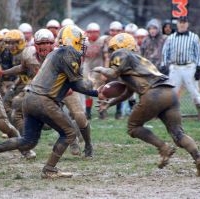New Technologies Help Diagnose—and Prevent—Sports Injuries

Sports injuries in young athletes are on the rise. According to the U.S. Center for Disease Control, for the American high schoolers who play sports, every year there are about two million injuries, five hundred thousand doctor visits, and thirty thousand hospitalizations. The growing concern is that many of these teen athletes ignore their injuries, and such inattention can worsen the issue over time.
Another trend is that kids are focusing harder on just one sport to become ultra-competitive. As a result, many of them are pushing themselves beyond acceptable thresholds in their formative years, leading to injuries that are typically seen in professional players.
Technology is being increasingly leveraged by various sports authorities and players in the form of proactive health monitoring and diagnostic tools to prevent injuries or detect them early.
The global sports medicine market is expected to grow to 8.3 billion dollars by 2019. Any advancement in the field of sports medicine goes a long way in treating injuries. Diagnostic and rehabilitation solutions are becoming more sophisticated, allowing for more targeted assessment of injuries and controlled strength-training and recuperation. Digital modeling is being used to search for the source of baseball players’ elbow injuries, and a number of technologies have been developed with the goal of detecting concussions in football players earlier and better understanding head trauma.
New technology is also helping in the prevention of sports injuries by facilitating better practice and training sessions, educating players on game fundamentals, and inventing new protective gear. A number of app-based training programs are taking shape, with leading sports brands such as Nike leveraging technology to offer new applications.
Innovative mouth-guards, head sensors, and wearables gather performance data and can even help prevent brain injuries, and wearables also are increasingly being used in understanding players’ biomechanics. This data, collected across varied parameters, is enabling trainers to put together customized training programs for players, minimizing chances of injuries. Technology to help minimize sport injuries also continues to be a topic of research among professors—an impact assessment system to reduce concussion injuries, part of a research project at RIT, was demonstrated at CES earlier this year.
Though technological devices and opportunities for recreational and professional sports have come a long way, medical practitioners reiterate that the most important thing is to take sports injuries seriously. When you are injured, your body is giving you a signal. Don’t ignore it; do the right things so that you can fully heal and continue to enjoy sports.

